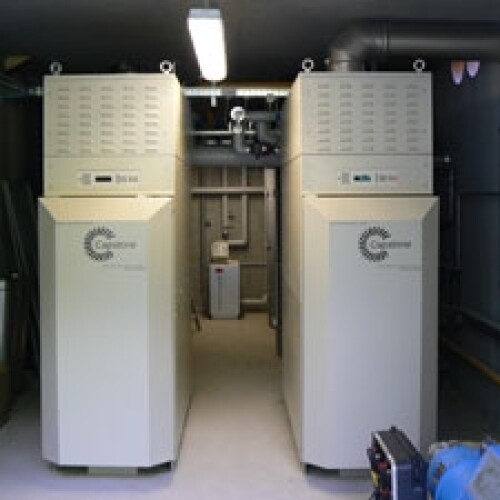Cogeneration and Trigeneration
Cogeneration and trigeneration: innovative solutions for energy efficiency
Cogeneration and trigeneration are advanced technologies that provide efficient solutions for the combined production of electrical, thermal, and cooling energy. These integrated systems optimize the use of energy resources, reduce operating costs, and minimize environmental impact.
What is cogeneration?
Cogeneration, also known as CHP (Combined Heat and Power), is a process that simultaneously generates electricity and useful heat from a single fuel source. This is achieved using a prime mover, such as a gas turbine or an internal combustion engine, which produces electricity. The residual heat generated during electricity production is recovered and used for heating buildings, producing domestic hot water, or supporting industrial processes.
Advantages of cogeneration
- Energy efficiency: Cogeneration achieves an overall efficiency of over 80%, compared to approximately 50% in traditional separate energy and heat production systems.
- Cost reduction: The combined use of electricity and heat significantly lowers energy costs by optimizing fuel use.
- Reliability: Cogeneration systems provide a more reliable energy supply, reducing dependence on the electrical grid.
Applications of cogeneration
- Industrial: Used in sectors such as chemical, paper, food, and manufacturing industries, where both electricity and heat are required.
- Residential: Suitable for large residential complexes and apartment buildings, improving overall energy efficiency.
- Commercial: Ideal for hospitals, hotels, shopping centers, and office buildings, ensuring continuous and reliable energy supply.
What is trigeneration?
Trigeneration, or CCHP (Combined Cooling, Heat, and Power), extends cogeneration by incorporating the production of cooling energy in addition to electricity and heat. The trigeneration system uses the thermal energy recovered from cogeneration to power absorption chillers, which produce chilled water for building cooling.
Advantages of trigeneration
- Higher energy efficiency: Trigeneration further optimizes energy use by recovering heat for cooling production, achieving overall efficiency above 85%.
- Versatility: By providing electricity, heat, and cooling energy, trigeneration is suitable for a wide range of applications, both in summer and winter.
- Economic savings: The integrated use of three energy forms helps reduce overall operating costs, improving return on investment.
- Environmental impact: Trigeneration further reduces greenhouse gas emissions compared to cogeneration, contributing to environmental sustainability.
Applications of trigeneration
- Industrial: Particularly beneficial for industries requiring cooling for production processes in addition to electricity and heat.
- Commercial: Ideal for large commercial buildings and offices with high cooling demands, such as data centers, hospitals, and shopping malls.
- Residential: Applicable to large residential complexes where cooling is needed during the summer months.
Key considerations for implementing cogeneration and trigeneration
The implementation of cogeneration and trigeneration systems requires a thorough evaluation of the energy needs of a building or industrial process. It is essential to rely on qualified professionals to properly design and size the system, considering:
- Fuel sources: The availability and cost of fuel influence the efficiency and feasibility of the system.
- Integration with existing systems: New systems must be integrated with existing energy infrastructures to maximize benefits.
- Maintenance: Regular maintenance is essential to ensure optimal performance and extend system lifespan.






